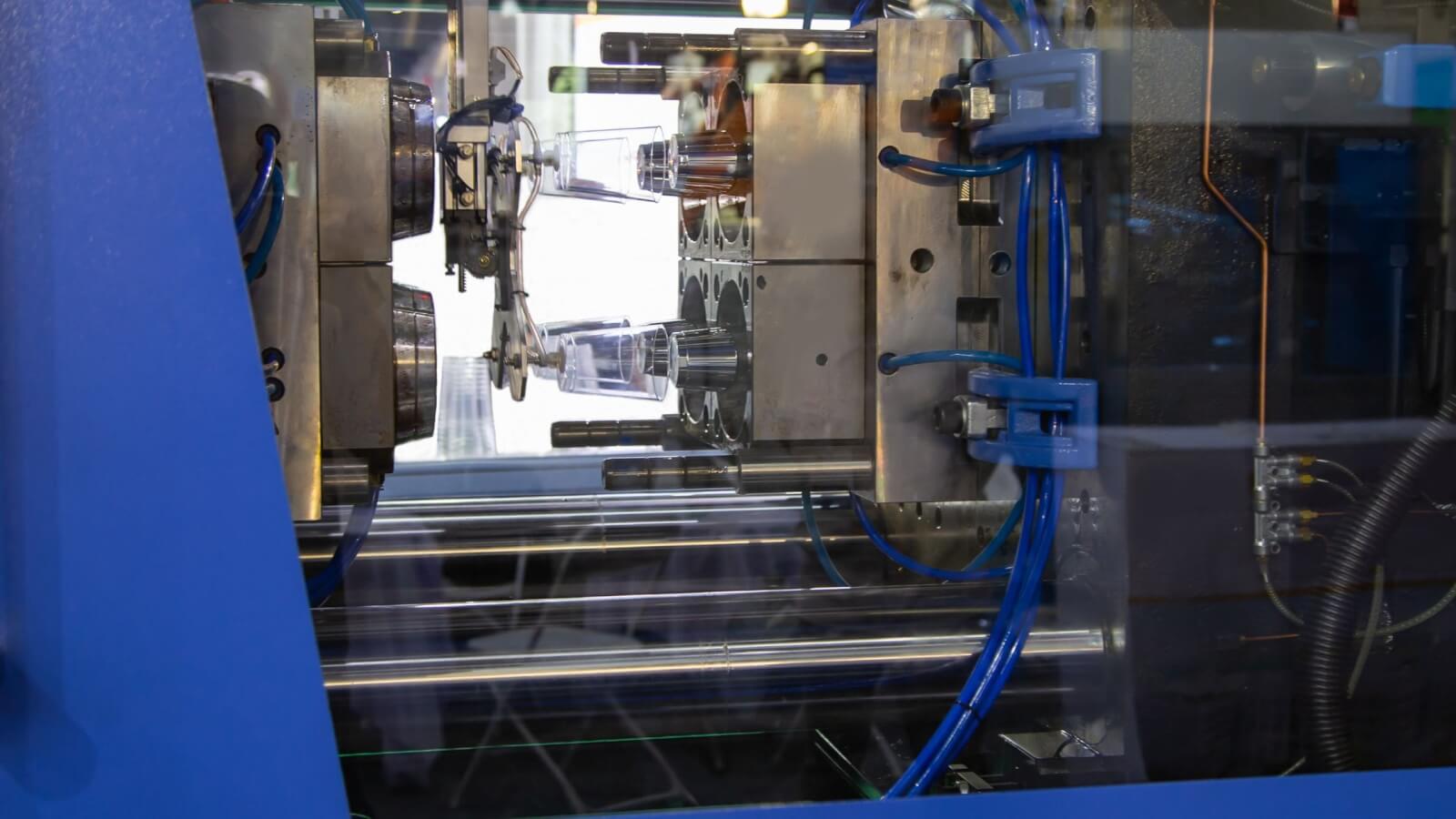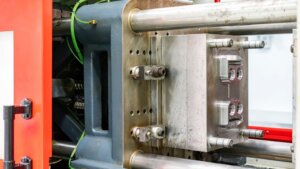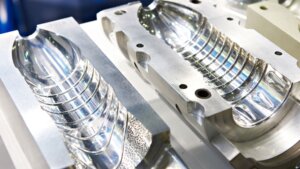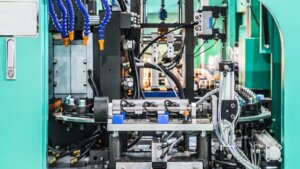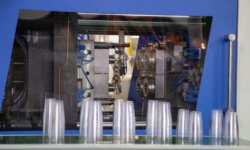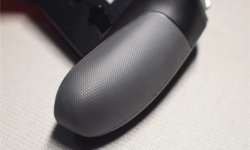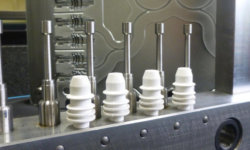Diving into the world of manufacturing, one cannot overlook the pivotal role of injection molding machines. These devices are the unsung heroes behind the multitude of plastic products we use daily. From simple household items to intricate automotive components, the versatility and efficiency of injection molding machines make them indispensable in the production landscape.
What Is an Injection Molding Machine?
An injection molding machine is the most important equipment for injection molding; that transforms raw plastic pellets into a myriad of products.
This marvel of modern engineering melds heat and pressure to morph plastics into shapes and sizes ranging from simple bottle caps to complex automotive components. The essence of the injection molding machine lies in its ability to mass-produce objects with incredible precision, repeatability, and efficiency.
Central to this process is the machine’s ability to heat the plastic material to a molten state, inject it into a meticulously crafted mold, and cool it down to solidify into the desired form.
This transformative process highlights the machine’s pivotal role in facilitating the production of consumer products, showcasing its indispensable nature in the manufacturing sector.
When was the first injection molding machine invented?
The genesis of the injection molding machine traces back to 1872, marking a significant milestone in the manufacturing world. Pioneered by John Wesley Hyatt, this invention revolutionized the production of billiard balls, setting the stage for the vast array of plastic products that would follow.
This historic innovation not only underscored the potential of plastic manufacturing but also laid the foundational technology that would evolve into the sophisticated injection molding machines of today.
How Does an Injection Molding Machine Work?
Embarking on the journey of how an injection molding machine operates unveils a fascinating blend of technology and precision. The process initiates with feeding plastic pellets into the machine’s hopper, a crucial step that determines the raw material’s journey towards transformation. These pellets are then transported to the barrel of the machine, where they are subjected to intense heat. This heat melts the pellets, turning them into a viscous liquid ready for molding.
The molten plastic is then propelled forward by a screw or plunger through the injection unit. This movement is not merely a transfer but a critical phase where the plastic is prepared under pressure for injection into the mold cavity.
The precision with which the molten plastic is injected into the mold is pivotal, as it ensures the material fills the entire cavity, reaching every nook and cranny to replicate the mold’s intricate designs and shapes.
Once the mold is filled, the plastic needs to cool and solidify, a transformation that is as crucial as the melting process. The cooling period is meticulously timed to ensure the material sets correctly, embodying the desired characteristics of strength, durability, and aesthetic appeal.
Upon solidification, the newly formed plastic part is ejected from the mold, marking the culmination of a process that melds raw materials into functional, often essential, products.
What Are the Components of an Injection Molding Machine?
Delving into the anatomy of an injection molding machine reveals a complex system composed of various essential components, each playing a crucial role in the machine’s operation and the overall injection molding process.
Injection Unit
- Hopper: The entry point for plastic pellets, which are the raw material for the injection molding process. It’s where the journey from pellet to part begins.
- Barrel: A heated section where the plastic pellets are melted. The barrel works in conjunction with the heating bands to ensure the plastic reaches the appropriate melt temperature.
- Heating Bands: Encircle the barrel, providing the necessary heat to melt the plastic pellets into a liquid form.
- Screw: This component plays a dual role; it mixes the molten plastic to ensure uniformity in melt and injects the plastic into the mold cavity.
- Nozzle: The point of exit for the molten plastic from the injection unit to the mold, ensuring precise delivery of the molten material into the mold cavity.
Clamping Unit
- Mold: The custom-designed part that shapes the molten plastic into the desired product.
- Clamping System: Holds the mold halves firmly together during the injection and cooling phases.
- Ejector System: Once the plastic has cooled and solidified, the ejector system releases the finished product from the mold.
Control System
- Control Panel: The brain of the machine, enabling operators to set and monitor all parameters of the injection molding process, including temperature, pressure, and cycle time.
Hydraulic System
- Pumps and Motors: Provide the power needed for the machine’s operations, from opening and closing the mold to injecting the molten plastic.
- Valves and Hoses: Control the flow of hydraulic fluid, essential for the machine’s precise movements and actions.
Cooling System
- Cooling Channels: Located within the mold, these channels circulate coolant to reduce the temperature of the molten plastic, facilitating solidification into the final product.
Safety Features
- Safety Gates: Prevent operator access to the machine’s moving parts during operation, ensuring a safe working environment.
- Emergency Stop Buttons: Allow for the immediate cessation of machine operations in case of an emergency, protecting both the operator and the machine.
What Are the Main Types of Injection Molding Machines?
Injection molding machines are classified into several main types, each distinguished by its mechanism and application, catering to specific manufacturing needs and preferences.
From hydraulic to electric, each type offers unique advantages and suits different production environments, reflecting advancements in technology and efficiency in the plastic molding industry.
Hydraulic Injection Molding Machines
Hydraulic injection molding machines, powered by hydraulic fluid, are known for their robustness and ability to exert high clamping force. These machines have been the industry standard for decades, valued for their strength and reliability.
Advantages:
- High clamping force, ideal for large and complex parts.
- Durable and long-lasting, providing a good return on investment.
Disadvantages:
- Higher energy consumption compared to newer technologies.
- Slower cycle times, which can impact production efficiency.
Mechanical Injection Molding Machines
Mechanical, or toggle, injection molding machines utilize a mechanical system to open and close the mold. These machines are less common in the modern industry but are noted for their simplicity and effectiveness in certain applications.
Electric Injection Molding Machines
Electric injection molding machines represent a leap in manufacturing technology, using electric servo motors for all movements, resulting in precise control and energy efficiency.
Advantages:
- Energy efficiency, significantly reducing operation costs.
- Greater precision and repeatability, enhancing product quality.
- Faster cycle times, boosting production capacity.
Disadvantages:
- Higher initial investment, though offset by lower operating costs.
- May not provide the high clamping force needed for very large parts.
Hybrid Injection Molding Machines
Hybrid injection molding machines combine the best features of hydraulic and electric machines, offering a balance between performance, energy efficiency, and cost.
Advantages:
- Better energy efficiency than purely hydraulic machines.
- Capable of high clamping force and fast cycle times.
- Versatile, suitable for a wide range of applications.
Disadvantages:
- May have higher initial costs than purely hydraulic machines.
- Complexity in maintenance due to the combination of systems.
Specialized Injection Molding Machines
Specialized injection molding machines are designed for specific applications, such as multi-material molding, insert molding, and micro-molding. These machines cater to niche markets requiring particular molding capabilities.
Advantages:
- Tailored for specific applications, offering enhanced capabilities.
- Can produce complex parts with unique materials or designs.
Disadvantages:
- Limited flexibility for other types of molding projects.
- Higher cost due to specialized design and technology.
How Are Injection Molding Machines Sized and Classified?
Injection molding machines are primarily sized based on three critical parameters: clamping force, shot size, and additional criteria such as platen size, tie bar spacing, and injection pressure.
Each of these factors plays a significant role in determining the machine’s suitability for specific molding tasks, affecting aspects such as the type of products it can produce, the materials it can handle, and its overall performance in a production environment.
Clamping Force
The clamping force of an injection molding machine is measured in tons, indicating the amount of force the machine can exert to keep the mold closed during the injection process. This force is crucial for preventing the molten plastic from escaping the mold cavity, ensuring the production of precise and accurate parts.
- Importance in Production: A machine with insufficient clamping force may produce parts with defects due to the mold opening under high injection pressure.
- Selection Criteria: The required clamping force depends on the part’s size, the material used, and the design of the mold cavity.
Shot Size
Shot size, measured in ounces or cubic centimeters, refers to the maximum amount of plastic that the injection unit can inject into the mold in one cycle. It’s a critical factor that determines the machine’s capacity to produce parts of a certain volume.
- Implications for Product Design: Machines with a smaller shot size are limited to producing smaller products, while those with a larger shot size can accommodate larger, more voluminous parts.
- Determining Factor: The choice of shot size is influenced by the size of the product to be manufactured and the weight of the material required to fill the mold cavity.
Additional Classification Criteria
Beyond clamping force and shot size, several other parameters are considered when classifying injection molding machines, enhancing the specificity with which machines can be matched to production needs.
- Platen Size: The dimensions of the platen determine the maximum size of the mold that can be accommodated.
- Tie Bar Spacing: This measurement affects the size of molds that can be used and is crucial for ensuring machine versatility.
- Injection Pressure: High injection pressures are necessary for molding materials with high viscosity or for filling complex mold cavities.
What are the dimensions of an injection molding machine?
Typical dimensions for injection molding machines can vary widely based on the type and size of the machine. However, a medium-sized machine might measure approximately 14 feet in length, 5 feet in width, and 6 feet in height. These dimensions are indicative and can significantly differ depending on the machine’s design and capacity.
How much does an injection molding machine weight?
The weight of an injection molding machine is another factor that varies greatly with the size and type of the machine.
A medium-sized machine might weigh around 12,000 lbs, but larger machines can weigh as much as 60,000 lbs or more. The weight is a critical consideration for facility planning, requiring appropriate floor reinforcement and installation logistics.
How Much Do Injection Molding Machines Cost?
When it comes to injection molding machines, the cost can vary widely, reflecting the diversity in size, functionality, and technology employed.
Typically, you might find smaller machines starting around $10,000, while larger, more advanced models can cost $200,000 or more. This broad range underscores the importance of understanding what factors influence the final price of an injection molding machine.
Factors influencing the cost include:
- Machine Type: Hydraulic, electric, and hybrid models come with different price tags, with electric machines generally being more expensive due to their precision and energy efficiency.
- Clamping Force: Machines capable of exerting higher clamping force, necessary for producing larger or more detailed parts, tend to cost more.
- Quality and Brand: High-quality machines from well-regarded manufacturers are more costly but often offer better reliability, precision, and customer service.
- Additional Features: Features such as enhanced control systems, higher injection rates, or specialized capabilities for specific materials can also add to the cost.
- Market Conditions: Like any other product, the price of injection molding machines can fluctuate based on supply and demand dynamics in the market.
For instance, a small, hydraulic press suitable for a startup or a small job shop might be on the lower end of the cost spectrum, while a large, electric machine equipped with state-of-the-art features for high-volume production could represent a significant investment for any company.
How Much Electricity Does an Injection Molding Machine Use?
The energy consumption of an injection molding machine can vary significantly based on its type, size, and operational parameters.
On average, a hydraulic injection molding machine might consume about 2.5 kWh per hour of operation, whereas electric machines, known for their energy efficiency, can use as little as 0.5 kWh per hour.
Hybrid models, which combine the best features of hydraulic and electric systems, typically fall somewhere in between.
The actual energy usage will depend on factors such as the machine’s efficiency, the complexity of the parts being produced, and the cycle time for each part. For example, producing large, complex parts in high volumes might require more energy per hour due to longer cycle times and higher clamping forces.
How Long Does an Injection Molding Machine Last?
On average, a well-maintained injection molding machine can last between 15 to 20 years, depending on several factors, including the volume of production it’s subjected to and the level of maintenance it receives.
- Low Volume Production: Machines used in low volume production tend to have a longer lifespan. The less frequent use reduces wear and tear on components, contributing to extended service life. For example, a machine used to produce specialized, low-demand products may operate well beyond the 20-year mark with proper care.
- High Volume Production: Conversely, machines utilized in high volume production environments are under constant stress, which can accelerate wear on mechanical parts and the hydraulic system. Such machines might require more frequent maintenance or replacement parts to sustain optimal performance over their lifespan. A machine in a high-volume facility, producing millions of parts per year, might still reach or exceed the 15-year average, but with more intensive upkeep.
What Are the Maintenance and Safety Protocols for Injection Molding Machines?
Proper maintenance and adherence to safety protocols are paramount to ensuring the longevity and safe operation of injection molding machines. These guidelines not only help in preventing workplace accidents but also ensure the machine runs efficiently for a longer period.
Maintenance Schedule:
- Daily: Check for hydraulic fluid leaks, ensure all safety guards are in place, and verify the operation of emergency stops.
- Weekly: Inspect and clean the hopper, lubricate moving parts, and check for wear and tear on components such as seals and hoses.
- Monthly: Test the functionality of the heating and cooling systems, inspect the hydraulic fluid level and quality, and clean the injection unit and clamping unit.
- Annually: Conduct a comprehensive inspection and maintenance of all machine parts, replace any worn-out components, and perform any necessary calibrations or adjustments.
Safety Tips:
- Training: Ensure all operators are properly trained on machine use, including understanding all safety features and emergency procedures.
- Personal Protective Equipment (PPE): Operators should wear appropriate PPE, such as safety glasses, gloves, and hearing protection, depending on the task.
- Lockout/Tagout Procedures: Implement lockout/tagout procedures for maintenance or when the machine is not in operation to prevent accidental startups.
- Regular Safety Audits: Conduct regular safety audits to identify potential hazards and ensure compliance with safety regulations.
How to Choose the Right Injection Molding Machine for Your Project?
Selecting the right injection molding machine is pivotal to the success of your manufacturing project. Here are critical factors you should consider:
Molding Machine Specifications and Model
- Evaluate the machine’s specifications: Ensure they align with your project’s requirements. Consider the machine’s clamping force, injection pressure, and shot size to match your part size and material.
The Mold’s Dimensions
- Match the mold dimensions with the machine’s capacity: The machine must accommodate the size of the molds you plan to use, considering platen size and tie bar spacing.
Injection Rate
- Assess the injection rate: A higher injection rate is beneficial for thin-walled products or materials that solidify quickly, ensuring the mold is filled before the material cools.
Capacity Availability
- Consider the machine’s capacity: Ensure the machine can handle the volume of production you anticipate without excessive downtime or wear.
Cycle Timing
- Understand cycle time: The machine’s ability to complete production cycles quickly can significantly impact overall productivity, especially for high-volume projects.
Core Pullers
- Check for core pull capabilities: If your product requires complex mold designs with movable sections, ensure the machine is equipped with core pullers to execute these designs accurately.
Where to Find an Injection Molding Machine?
When it comes to acquiring an injection molding machine, manufacturers have a plethora of options. Leading brands in the industry include Arburg, Engel, Haitian, Husky, and Sumitomo, all of which are renowned for their innovation, reliability, and service.
These companies offer a range of machines tailored to different manufacturing needs, from small, precision parts to large-scale production. For those looking to purchase a machine, options include direct buying from manufacturers, purchasing through industrial machinery distributors, or exploring second-hand machines for more budget-friendly solutions.
Additionally, online marketplaces and industry trade shows can be excellent resources for comparing models, features, and prices, ensuring you find the right machine for your project’s specific requirements.
Conclusion
The exploration of injection molding machines reveals their critical role in the manufacturing sector, transforming raw plastic pellets into a vast array of products that touch nearly every facet of our lives. From their historical inception in 1872 to the sophisticated, energy-efficient models of today, these machines have evolved to offer precision, efficiency, and versatility unmatched in the production of plastic goods. Whether through hydraulic, electric, or hybrid models, injection molding machines cater to various production needs, emphasizing the importance of selecting the right machine based on specific project requirements. Their ability to produce everything from simple household items to complex automotive parts with remarkable repeatability makes them an indispensable asset in the manufacturing landscape.
